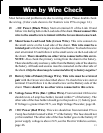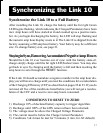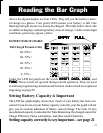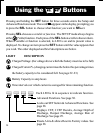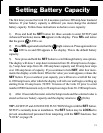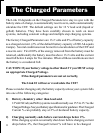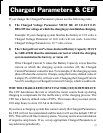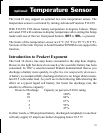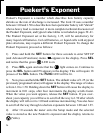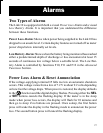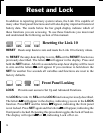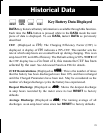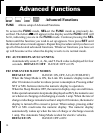
23
Charged Parameters & CEF
If you change the Charged Parameters please use the following rules:
1) The Charged Voltage Parameter
MUST BE AT LEAST 0.1V
BELOW the voltage at which the charging system finishes charging.
Example: If your charging system finishes the battery at 13.8 volts, a
Charged Voltage Parameter of 14.0 volts will not work. Lower the
Charged Voltage Parameter to 13.7 volts or less.
2) The Charged Current % times declared Battery Capacity MUST
be GREATER than the minimum current at which the charging
system maintains the battery, or turns off.
If the Charged Current % times the Battery Capacity is less than the
current at which the charging system switches off, the Charged
Current Parameter cannot be met. For example, if the charging system
shuts off when the current is 10 amps, using the factory default value of
4 amps (2% of 200 Ah), will not work. Changing the Charged Current
% to 6% would give a Charged Current of 12 amps, which would work.
WHY THE CHARGE EFFICIENCY FACTOR (CEF) IS IMPORTANT:
The CEF determines the rate at which the meter counts back up during
charging to compensate for the inefficiency of the charging process. The
CEF has a factory default value of 90%. This means that you must return
10.0 amp hours to store 9.0 Ah in the battery.
If you have a charging system that cannot satisfy the Charged Parameters,
the CEF will not be recalculated and the meter will use the default CEF of
90%. This will work fine in most systems. You may notice an accumulation
of negative amp hours. If so, set up appropriate Charged Parameters or
resynchronize periodically.



